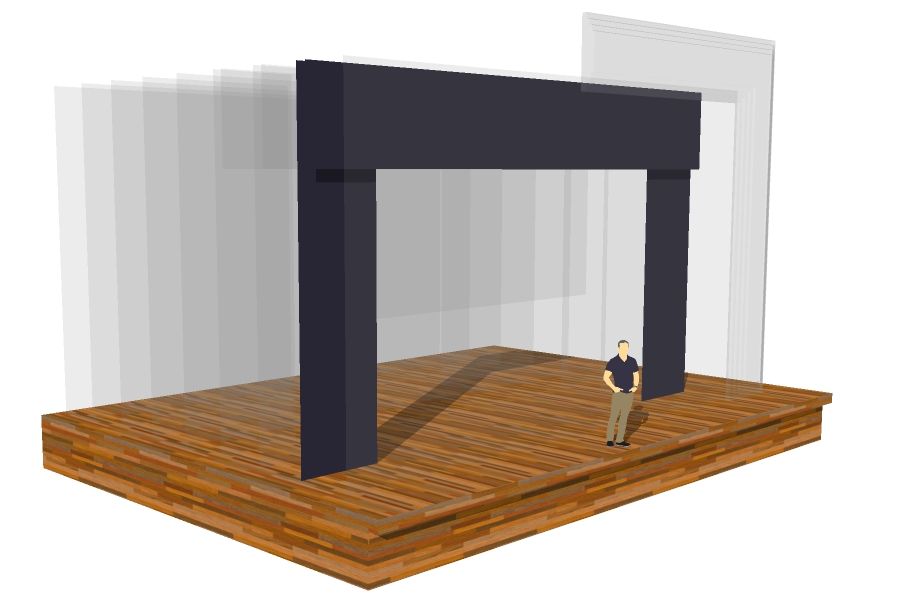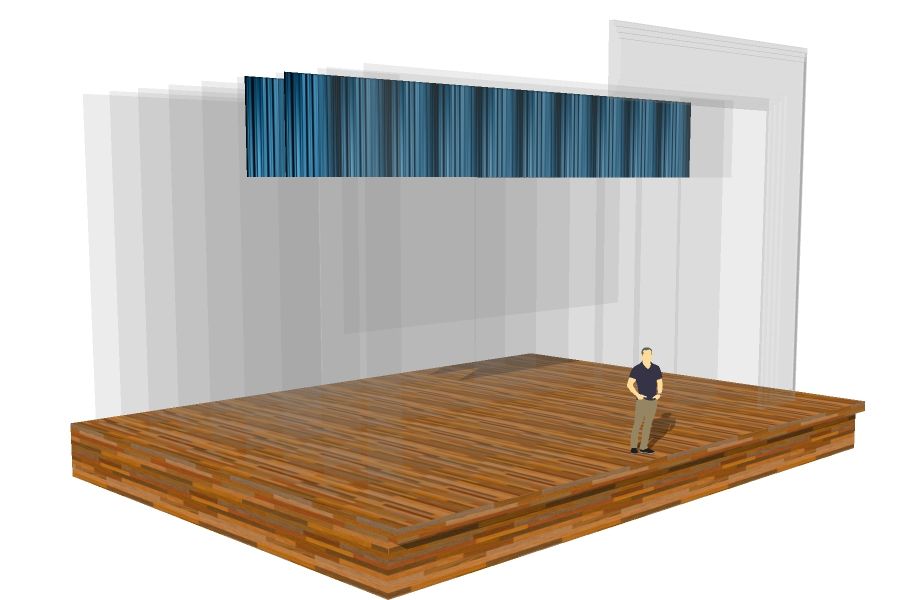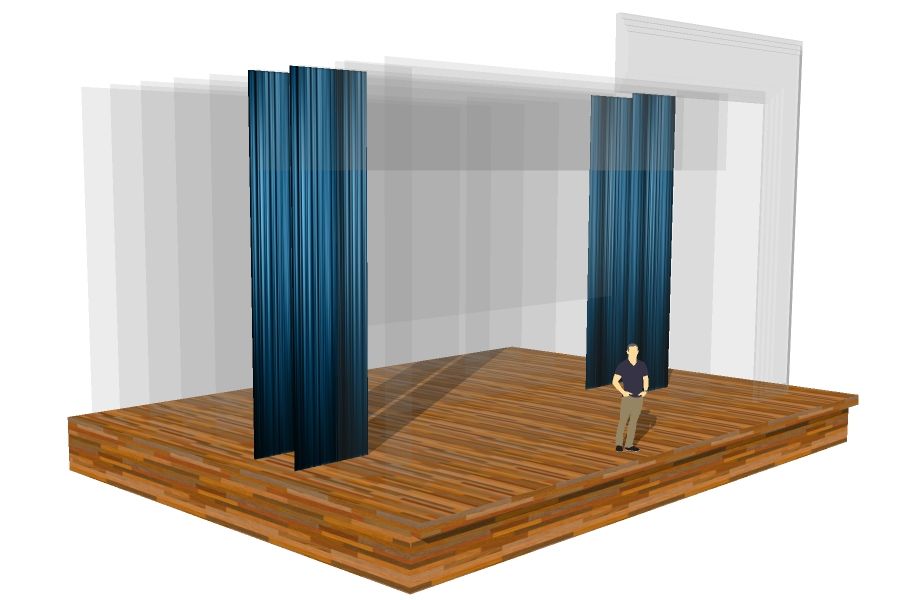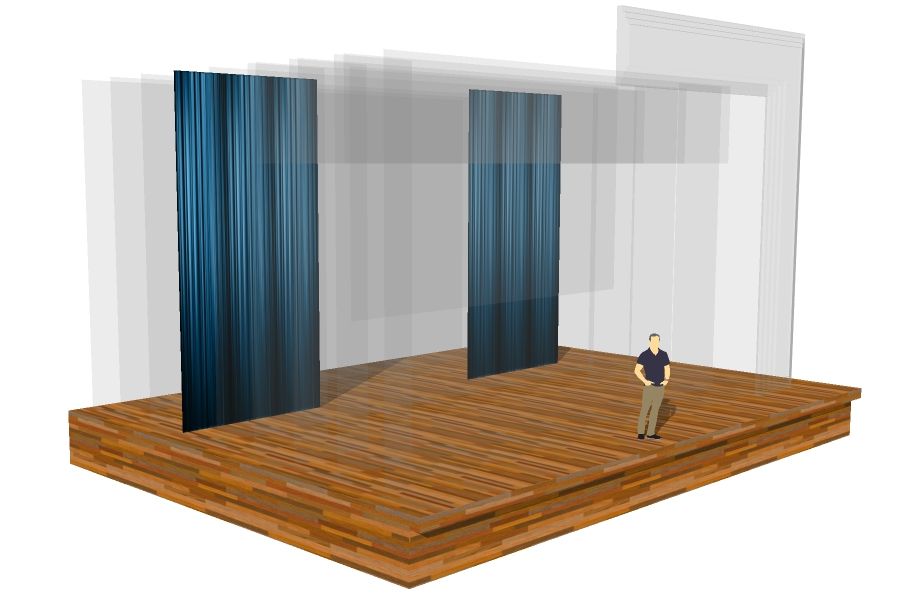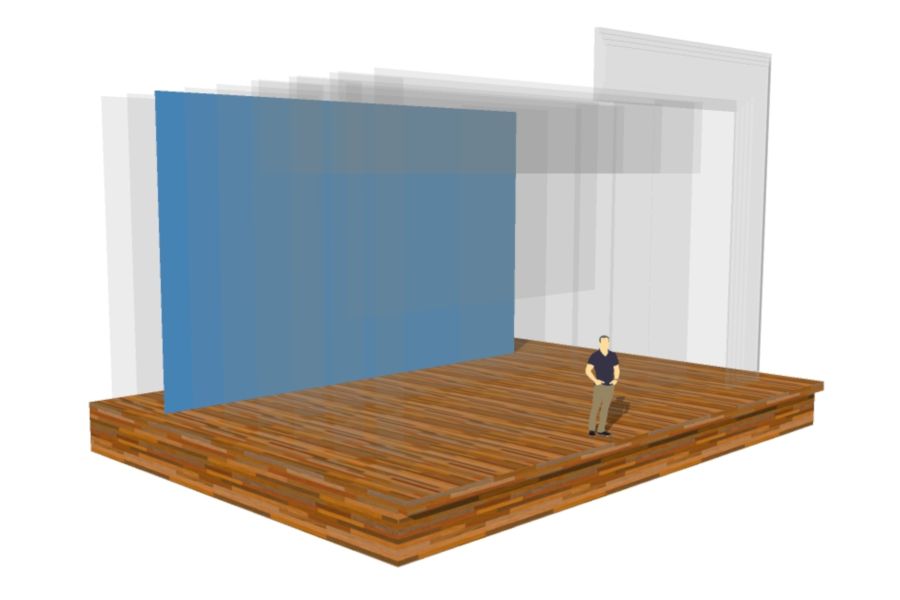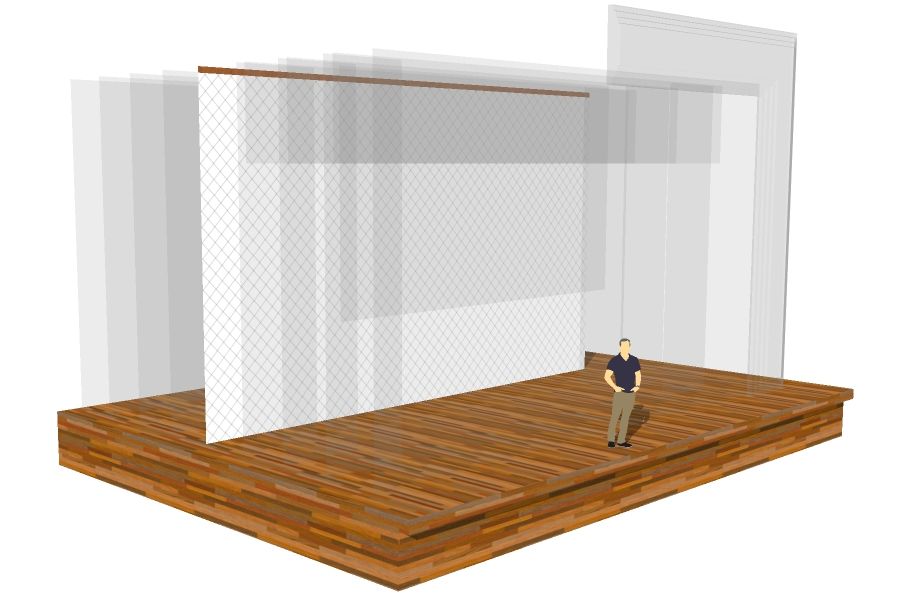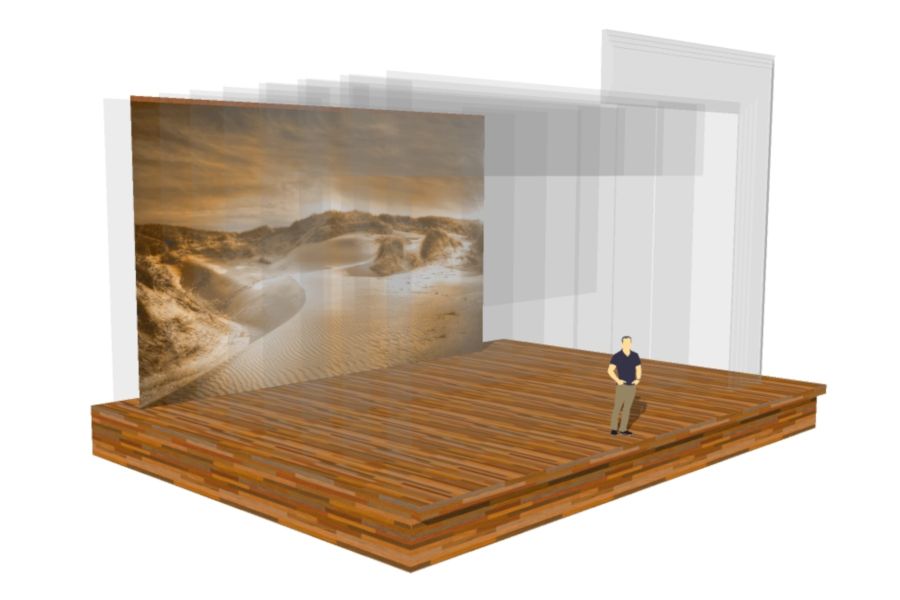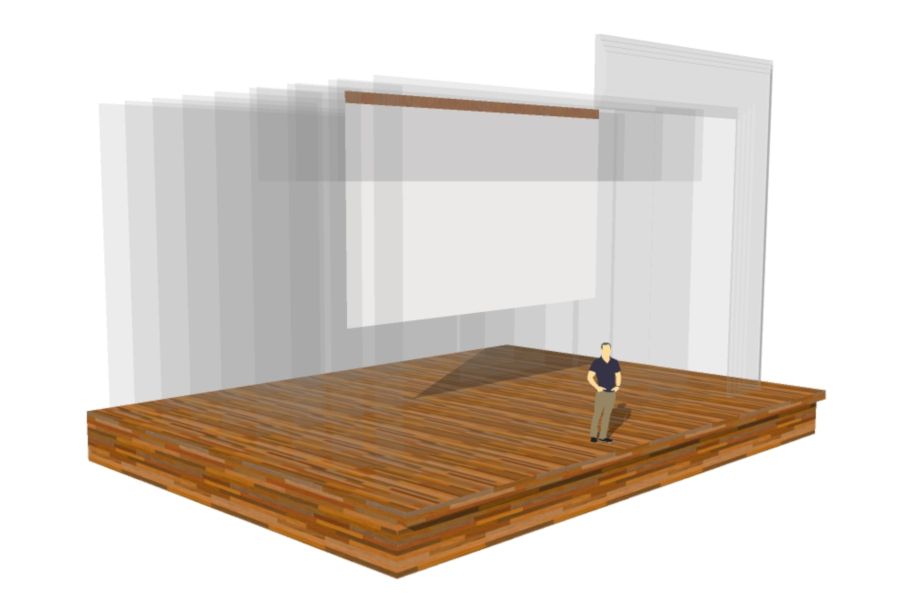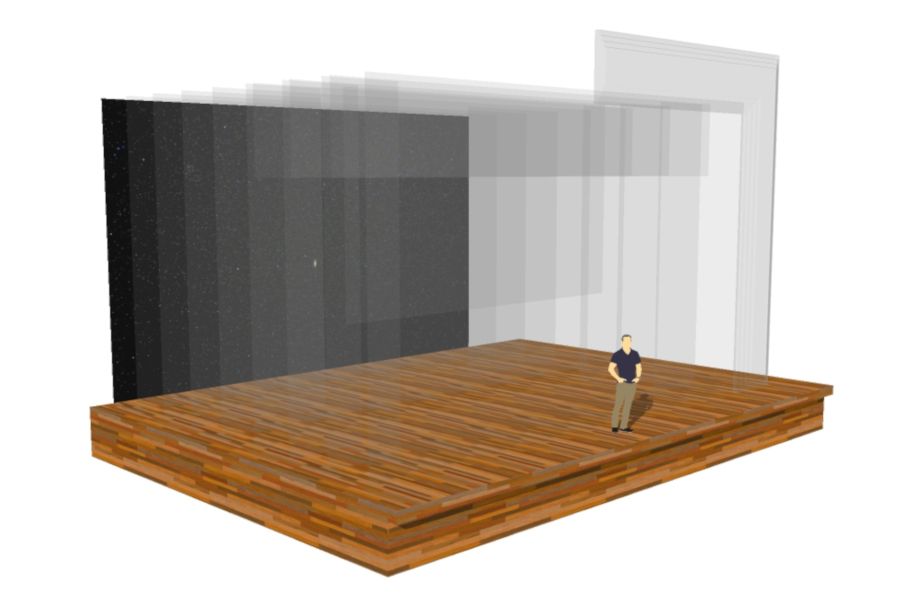Stage Curtains
Below you will find a brief description of several curtains layers that you can find and use as a guide for your project.
Proscenium Curtains
The Proscenium Curtain is also known as Grand Drape, Front Curtain, Main Curtain, Act Curtain, and House Curtain
It is used as a sight and sound barrier between the audience and stage; it enhances the beauty of the place and it is the focus point for the audience before a performance. It is often designed and fabricated to match the color scheme and décor of the building and some luxurious versions may have fringe, braid or tassel trimmings, or other decorative detail.
Frequently, the proscenium curtain is accompanied by a valance which is commonly designed to match the main curtain finish, or draped with decorative details to add to the dramatic effect of the proscenium. The proscenium curtains may travel, rise, drape, or sink.
There are various proscenium curtain styles. A proscenium curtain can be a Fly-out Curtain (guillotine), which rises above the proscenium opening and is commonly seen in theaters with a flying gallery, or it can be a Traveler curtain. The most common and affordable alternative is a Traveler curtain. It is used in schools, churches, and theaters of all sizes. A traveler curtain hangs from a curtain track system and it generally opens (traverses) from the center to the sides in a horizontal movement. Other more complex and sophisticated proscenium curtain systems are available like an Austrian, Venetian or Tableau curtain systems which in most cases require motorization. The different styles of of commonly used Proscenium curtains are described below.
Traveler curtains
A traveler curtain is the most common curtain on a stage. It consists of two overlapping curtain halves that are attached to two overlapped curtain track sections. The curtain carriers or rollers which are guided by the track are connected to the top edge of the curtain at 1 foot intervals.
The draw line is fastened to the lead carrier or master carrier which pulls and travels the rest of the curtain to the open and close position.
Occasionally, a one-way traveler is required which means the curtain is drawn from either side of the stage on a single long curtain track. Typically, a traveler curtain is accompanied by a pleated valance which is designed to match the main curtain finish, or a more sophisticated option is a swagged valance with decorative detail to add to the dramatic effect of the proscenium.
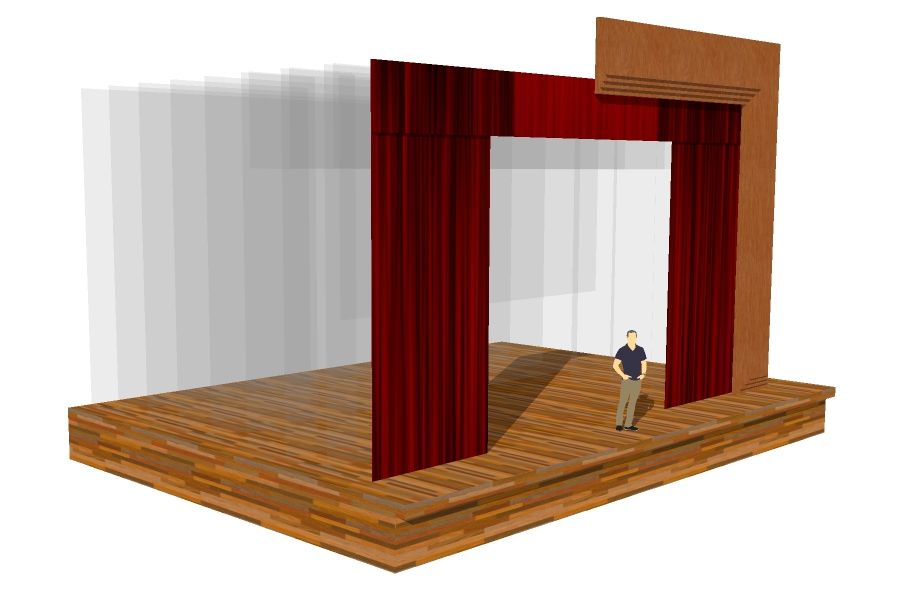 Some of the popular fabrics we recommend for a main curtain include - but are not limited to - Cotton Velour 25oz FR, or the economical and versatile Synthetic Encore Velour 22oz IFR, as well as the Synthetic Crescent Velour 20oz IFR and the luxurious Synthetic Velour Prestige 26oz IFR. For school projects, vinyl backed Doral Opaque 21oz IFR its often chosen for its opacity, durability and Inherently Flame Resistant properties. As an alternative a curtain liner can be added to protect the face fabric, help with opacity and to give the back side of the curtain a more finished look. Some of the lining fabrics we recommend are Ranger Lining 12oz FR or Poplin Lining 10oz IFR. Please visit the fabric section of our website for more information.
Some of the popular fabrics we recommend for a main curtain include - but are not limited to - Cotton Velour 25oz FR, or the economical and versatile Synthetic Encore Velour 22oz IFR, as well as the Synthetic Crescent Velour 20oz IFR and the luxurious Synthetic Velour Prestige 26oz IFR. For school projects, vinyl backed Doral Opaque 21oz IFR its often chosen for its opacity, durability and Inherently Flame Resistant properties. As an alternative a curtain liner can be added to protect the face fabric, help with opacity and to give the back side of the curtain a more finished look. Some of the lining fabrics we recommend are Ranger Lining 12oz FR or Poplin Lining 10oz IFR. Please visit the fabric section of our website for more information.
Do you need to match your curtain with a high quality reliable curtain track system? We have a wide variety of track assemblies to chose from. The track selection will be determined by the curtain dimensions, curtain weight, and whether it is a curved or straight configuration. The track recommended for straight runs includes the boxed-type BESTEEL® 170 Series curtain track, or the SILENT STEEL® 280 Series curtain track. On curved configurations the I-Beam type RIG-I-FLEX® 140 Series curtain track, TRIPL-I-TRAC® 420 Series curtain track, or the PATRIARC® 500 Series curtain track may be used; depending on layout, curtain weight, and overall curtain dimensions.
Austrian Curtain
An Austrian curtain -also known as Puff curtain, or Waterfall curtain- consists of multiple rows of scallops or swags joined together vertically to form a single piece. The curtain is pleated horizontally at the top to provide the depth of each scallop while the swags are formed by adding vertical fullness and pleating the fabric along the vertical edges of each row. The fabric can be evenly shirred or hand pleated for a more dramatic effect.
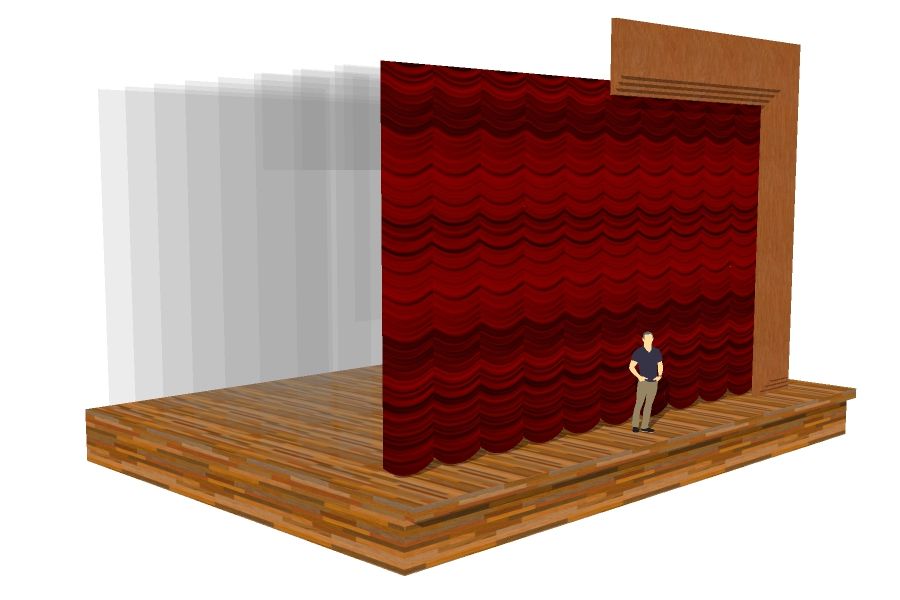
When the curtain opens, the scallops are simultaneously raised by synchronized individual lift lines running along the seams in the back of the curtain. The scallops gather against the support hardware –which can be a pipe batten or truss- so the curtain stores overhead in the open position.
A Puff curtain will always lift and fall with the bottom edge parallel to the stage floor.
Some of the popular fabrics we recommend for an Austrian curtain include - but are not limited to - medium weight Blackout Satin 12oz IFR or Synthetic Encore Velour IFR, as well as our lustrous Synthetic Velour Prestige 26oz IFR. For a spectacular-stand-out curtain consider using a shimmery decorative fabric.
NOTE: Austrian curtains are more expensive than traditional traveler curtains, due to the additional labor and materials required to manufacture them.
Additionally, an Austrian curtain does not operate on a curtain track system as traveler curtains do, and in order to function, it requires specialized rigging which in most cases implies the use of a winch or lift curtain machine combined with a set of specialty pulleys, muling sheaves, clew connector and cables to operate all the lift lines in a synchronized and simultaneous lifting motion.
Venetian Curtain
A Venetian curtain consists of multiple fabric panels joined together vertically to form a single piece. This curtain can be fabricated with as much as 200% horizontal fullness, depending on the fabric used, and operates through multiple lift lines fed through rings placed on the back of the curtain, usually on each vertical fabric seam and connected to the curtain bottom. The hardware used to raise and lower the curtain is similar to the one used for an Austrian Curtain, so a Venetian will always lift and fall with the bottom edge parallel to the stage floor. A variant of a Venetian curtain is a Venetian Contour curtain which can be rigged to lift and gather overhead on a straight line or if each line is independently operated various contour shapes can be achieved. In order for the curtain to create these contours, multiple lift curtain motors and specialized controls to link the motors together are used.
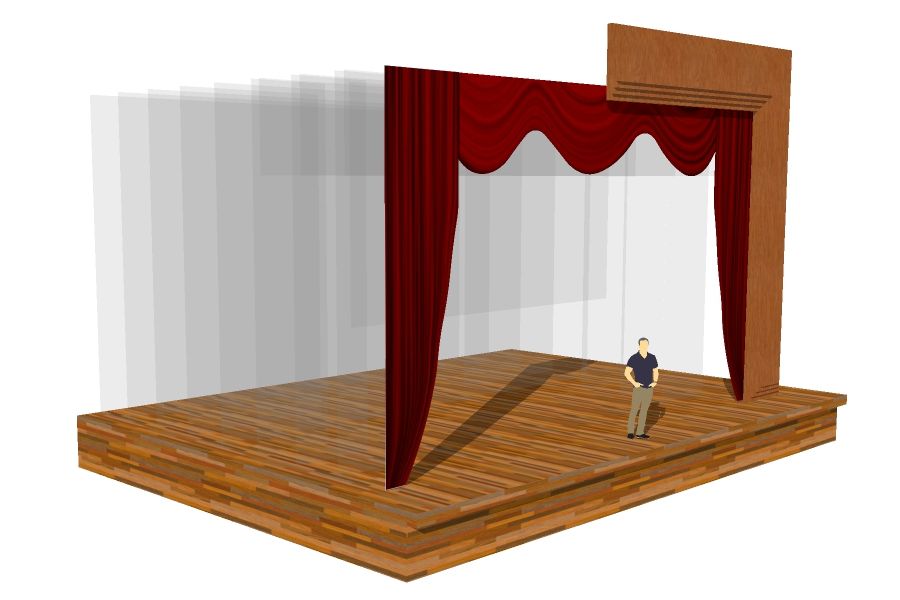
Some of the fabric choices we recommend for a Venetian or Contour curtain include - but are not limited to - permanently fire retardant Synthetic Encore Velour 22oz IFR, or our rich matte finished Synthetic Crescent Velour 20oz IFR or for a spectacular-stand-out curtain consider the luxurious Synthetic Velour Prestige 26oz IFR or the elegant medium weight Blackout Satin 12oz IFR.
Do you need more information? Please feel free to visit the fabrics section of our website!
NOTE: Venetian Contour curtains are more expensive than traditional traveler curtains, due to the additional labor and materials required to manufacture them. Additionally, Venetian curtains do not operate on a curtain track system like traveler curtains do, and in order to function, it requires specialized rigging which in most cases implies the use of a winch or lift curtain machine combined with a set of specialty pulleys, muling sheaves, clew connector and cables to operate all the lift lines in a synchronized and simultaneous lifting motion.
Tableau Curtain
A tableau or tab curtain consists of two pleated panels hanged from a single batten with a center overlap similar to a standard traveler curtain. Tab curtains open diagonally by pulling up into two large scallops creating a draped opening. This is achieved by running cables through rings sewn diagonally across the back of the curtain, creating a combined opening and lifting motion when the lines are pulled. The shape of the scallop and the width of the revealed opening are mostly determined by the position and angles of the pulling lines. For even and smooth operation, motorized rigging is required, but in some cases these curtains are hand operated.
 As a general rule, a Tableau curtain is most often taller than wider and are mostly seen in opera houses.
As a general rule, a Tableau curtain is most often taller than wider and are mostly seen in opera houses.
Some of the fabric choices we recommend for a Tableau curtain include - but are not limited to - Blackout Satin 12oz IFR or Eco-Poly Velour 15oz IFR. If total opacity is required, we recommend using Velour Crescent 20oz IFR, Synthetic Encore Velour 22oz, or for an opulent shimmery look consider using Prestige Velour 26oz IFR.
Please visit our fabric page for more information.
The possibilities are endless...
NOTE: Due to the additional labor to fabricate these curtains and the customized rigging requirements, Tableau curtains are more expensive than traditional traveler curtains.
In most cases, specialized motorized rigging is required by means of lift curtain machine and specifically located rigging pulleys to create a synchronized diagonal lifting motion. In some cases, small scale drapes can be hand operated.
